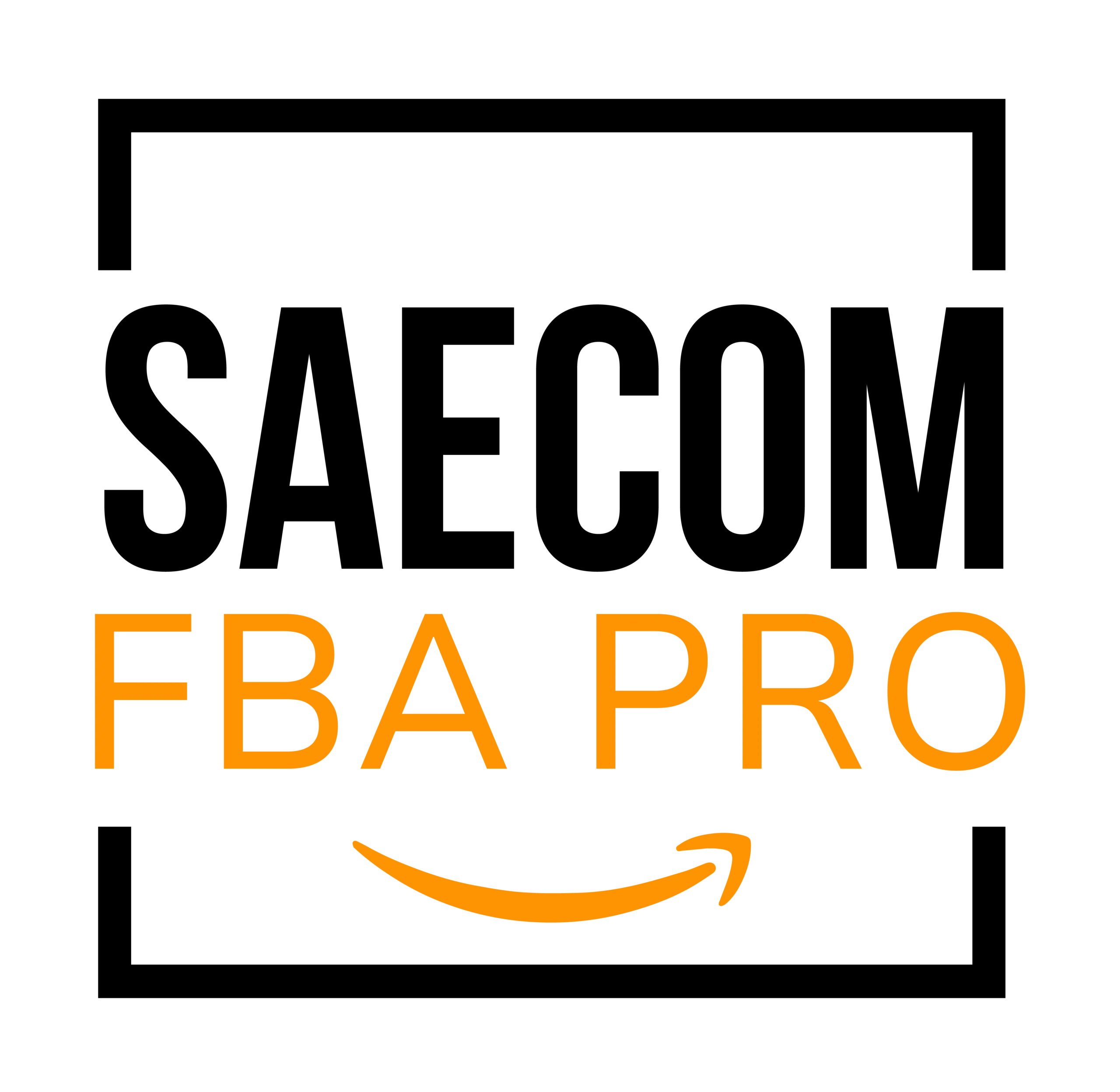How to Improve Organic Ranking on Amazon in 2025?
In the world of e-commerce, securing a high organic ranking on Amazon has become a critical goal for sellers who want to stand out and attract more customers. As we enter 2025, achieving a top position in Amazon’s search results is more crucial than ever.
With fierce competition, frequent algorithm updates, and the complexity of keyword optimization, sellers often struggle to maintain or improve their rankings.
In this comprehensive guide, we’ll walk you through effective strategies to enhance your Amazon organic ranking. From identifying common challenges to leveraging professional tools and optimization techniques, you’ll gain actionable insights to increase your product visibility and drive higher sales.
This is the first part of a three-part series, where we’ll start by covering organic ranking fundamentals—explaining what organic ranking is, why it’s vital for success, and the key factors that influence it. Next, we’ll dive into listing optimization strategies, offering expert tips on crafting compelling titles, optimizing product descriptions, and using relevant keywords to boost visibility.
Let’s get started on improving your Amazon ranking in 2025!
Organic Ranking Fundamentals
Understanding organic ranking is essential for any seller looking to succeed on Amazon. Organic ranking refers to the position of your product in Amazon’s search results without any paid advertisements.
Neglecting organic ranking means missing out on the majority of Amazon’s customer traffic. Research shows that over 60% of clicks go to the top three organic search results. Several key factors influence Amazon’s organic ranking, including sales velocity, keyword relevance, product listing optimization, and customer engagement.
In this section, we’ll discuss why Amazon organic ranking matters, how it impacts your sales, and the essential strategies to improve and maintain a high-ranking position in Amazon’s search results.

The Impact of Amazon Organic Ranking on Sales Success
Organic ranking on Amazon has a direct impact on visibility and sales. The higher a product ranks, the more likely it is to be seen by potential buyers. Research indicates that 70% of Amazon shoppers never go beyond the first page of search results, emphasizing the importance of securing a top-ranking spot.
Additionally, a high organic ranking significantly boosts sales. Studies show that the top three organic search results receive the highest number of clicks, with the first-ranking product typically capturing the majority.
Beyond sales, organic ranking also affects customer trust and perception. Buyers tend to associate higher-ranked products with credibility and relevance, increasing their chances of clicking and making a purchase.
For these reasons, maintaining a strong organic ranking is crucial for long-term success in Amazon’s highly competitive marketplace.
Key Amazon Ranking Factors
Amazon determines product rankings using a complex search algorithm that analyzes multiple factors to display the most relevant and high-quality products. These include:
- Sales Velocity—The speed at which a product sells plays a major role in organic ranking. Products with high sales volume and consistent orders tend to rank higher.
- Keyword Relevance – Amazon ranks products based on their relevance to customer search queries. Optimizing your product listing with high-performing keywords can improve your ranking.
- Product Listing Optimization – Well-structured titles, bullet points, descriptions, and backend keywords help Amazon’s algorithm recognize the relevance of your product.
- Customer Engagement – Factors like click-through rate (CTR), conversion rate, and customer reviews signal to Amazon that your product is valuable to shoppers.
- High-Quality Content – Clear product descriptions, detailed specifications, and engaging images enhance product visibility and improve ranking.
- Competitive Pricing – Offering competitive prices compared to similar products can positively impact rankings. Amazon favors products that provide good value for customers.
- Inventory Availability – Running out of stock can hurt rankings. Maintaining sufficient inventory ensures consistency in sales, keeping your ranking stable.
- Customer Satisfaction – Positive reviews, prompt customer service, and high ratings contribute to improved rankings by building trust and credibility.
- External Traffic – Bringing traffic from social media, websites, and influencer marketing can increase sales and boost your ranking.
Amazon’s search algorithm continuously evolves, meaning sellers must stay updated on ranking criteria changes to maintain visibility.
For instance, if Amazon updates its algorithm to prioritize customer reviews or product images, sellers who fail to adjust may see their rankings drop. Staying informed and adapting strategies accordingly is crucial for success.
A9 vs. A10: Understanding Amazon’s Search Algorithms
Amazon uses two key algorithms—A9 and A10—to determine search rankings.
A9 Algorithm (Search-Based Ranking)
🔹 The A9 algorithm focuses on ranking products based on their relevance to a customer’s search query.
🔹It prioritizes keyword relevance, product title optimization, and backend keywords.
🔹 Customer engagement metrics such as CTR and conversion rates also influence rankings under A9.
A10 Algorithm (Personalized Ranking)
🔹 The A10 algorithm is designed for personalized product recommendations.
🔹 It suggests products based on a customer’s browsing history, past purchases, and search behavior.
🔹 Unlike A9, A10 dynamically adjusts rankings based on individual user behavior, enhancing personalization.
In simple terms, A9 determines how products rank in search results, while A10 focuses on recommending relevant products to individual customers. Understanding both is crucial for optimizing visibility and increasing conversions.
To improve rankings under these algorithms, sellers should invest in keyword optimization, customer engagement, and external traffic sources to drive more sales.
Amazon Listing Optimization Strategies

Optimizing product listings is one of the most effective ways to improve Amazon rankings. Here’s how to do it right:
1. Title Optimization
- Craft clear, concise, and keyword-rich titles that highlight key product features.
- Keep titles between 100 and 200 characters.
- Include primary keywords early in the title.
- Highlight unique selling points, such as size, material, or benefits.
Instead of “Bluetooth Earbuds”, write “Wireless Bluetooth Earbuds with Noise Cancellation for Running & Workouts”.
2. Product Description Enhancement
- Use the product description to highlight key features and benefits in an engaging way.
- Include relevant keywords naturally.
- Make descriptions scannable by using bullet points.
- Add social proof, such as customer testimonials.
Instead of writing “This blender is portable,” say, “Enjoy smoothies on the go with this compact, USB-charged blender—perfect for travel and gym use.”
3. Keyword Research & Placement
- Conduct thorough keyword research using tools like Helium 10 or Jungle Scout.
- Use long-tail keywords for higher conversion rates.
- Add relevant keywords to titles, bullet points, and descriptions.
Instead of “Yoga Mat”, use “Non-Slip Extra Thick Yoga Mat for Home Workouts & Gym”.
4. Image Optimization
- Images are crucial for engagement and conversions.
- Use at least 7 high-quality images from different angles.
- Optimize filenames (e.g., “stainless-steel-water-bottle.jpg”).
- Include infographics highlighting product benefits.
Final Thoughts
Improving your organic ranking on Amazon in 2025 requires a data-driven approach that focuses on keyword relevance, listing optimization, and customer engagement. By implementing these strategies, you can enhance your Amazon search visibility, attract more customers, and ultimately increase sales.


